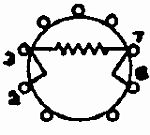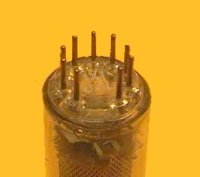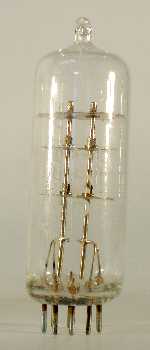Emilio Ciardiello
20.May.11
|
2
Following the generic thread on solid-state replacements given above, here are design data for a 3TF7 replacement. Design was based upon the information found in ‘The Ballast Tube Handbook’ by Jacobi and on the descriptive field of the R-390x part list:
- Jacobi synthesizes data as: 8.6 to 16.6 volt, 290 to 330 mA
- The R-390A documentation describes it as: ‘RESISTOR, CURRENT REGULATOR: 0.310A, 8.6 Vac’
Actually, according to the voltage charts of R-390x receivers, the 3TF7 gives approximately 12 Vac at its output, with an input voltage around 26 Vac. The ballast output is wired to the series detailed below:
-
Heater of the BFO oscillator, a 6BA6W/5749
-
RF blocking coil L706, 0.6 ohm nominal DC resistance, according to the manual of R-390A.
-
Heater of the PTO oscillator, a second 6BA&W/5749.
Here is the diagram of this circuit, similar for both receivers.

Fig. 1
Giving a look to the voltage distribution along the above paths for both the R-390 and the R390A we find different data as resulting from the voltage/resistance tables in the respective technical manuals:


Fig. 2
The secondary winding nominal voltage, entering into the 3TF7 ballast, is set at 26 Vac for the R-390 and at 25.2 Vac for the R-390A. Well, we have at the output of the ballast 11.3 Vac, or 14.7 V drop, for the R-390 and 12 Vac, or 13.2 V drop, for the R-390A.
It was common practice to operate low power tubes at reduced heater voltage for a more stable behavior through their life. From the tables of the R-390 we find 5.3 volts across the heater of V508, the BFO oscillator, and 5.7 volts across V701, the VFO oscillator, plus a 0.3 V drop across the RF filtering inductor. In the R-390A voltage drops across the heaters of the two tubes are the same, 6 volts each, but we find no drop on the RF filter coil. The inconsistency of different readings for two series connected heaters can derive from tolerances in their resistance values, as we should think of 3TF7 and of the same controlled heaters as temperature depending resistors. Data given for 3TF7, 8.6 V drop at 310 mA, probably refer to its cold resistance at the start.
Since oscillator tubes operate with heater drops around 6 VAC, the current flow must be under the nominal value of 300 mA. Measuring heater current at different voltages on several 6BA6 and 6BA6W samples, I found the following values:
|
Test voltage |
Average Current |
I min |
I max |
|
6.3 Vac |
297 mA |
290 mA |
310 mA |
|
6.0 Vac |
285 mA |
280 mA |
300 mA |
|
5.7 Vac |
277 mA |
270 mA |
290 mA |
|
5.3 Vac |
266 mA |
260 mA |
278 mA |
Now we have enough data to refine the design. The circuit is given below in figure 3. Assuming an average heater voltage of 5.7 volts for R-390 and of 6.0 volts for R-390A, the value of the limiting resistor R1 should be centered for a current of about 285 mA.
.jpg)
Fig. 3 – Schematic diagram of the simplified 3TF7 solid state replacement.
The circuit was assembled on a small copper plate, 20 by 60 mm, 2.5 mm thick, obtained pressing a copper water tubing. The plate was soldered to pins 1 and 6 of a noval plug. IC1 was mounted with a mica spacer in the coolest place, close to the base. The bridge was riveted to the plate, while other components were mounted using small teflon press-fit stand-offs. A picofuse can be used for F1 if available. Otherwise the fusible link can be easily removed from a 20 mm glass cartridge and soldered directly into the circuit.
The current set resistor R1 was made paralleling four 68 ohms and one 75 ohms 1 W metal oxide resistors.

Fig. 4 – Working prototype.
Before the use in the R-390A receiver, the prototype was thoroughly tested with a load very similar to the real one, obtained connecting two 6BA6W heaters and a small 0.5 ohm resistor in series. Voltage drop across the 0.5 ohm resistor was measured with a Fluke 8922A true rms digital voltmeter, to evaluate the current flowing in the heaters. Moving the supply voltage in the range of 25.2 VAC +/-10%, the measured rms current in the circuit was 286mA +/-2%.
The prototype was then operated inside a R-390A, with no appreciable difference against the original ballast. Obviously I could not run full tests to the temperature and voltage limits specified for the receiver. Anyway I am quite sure that very few people today operate their R-390 or R-390A at 75˚C ambient temperature.
By the way the 3TF7 and several variants are still listed in the site of Amperite.
Regards, Emilio
|








.jpg)
